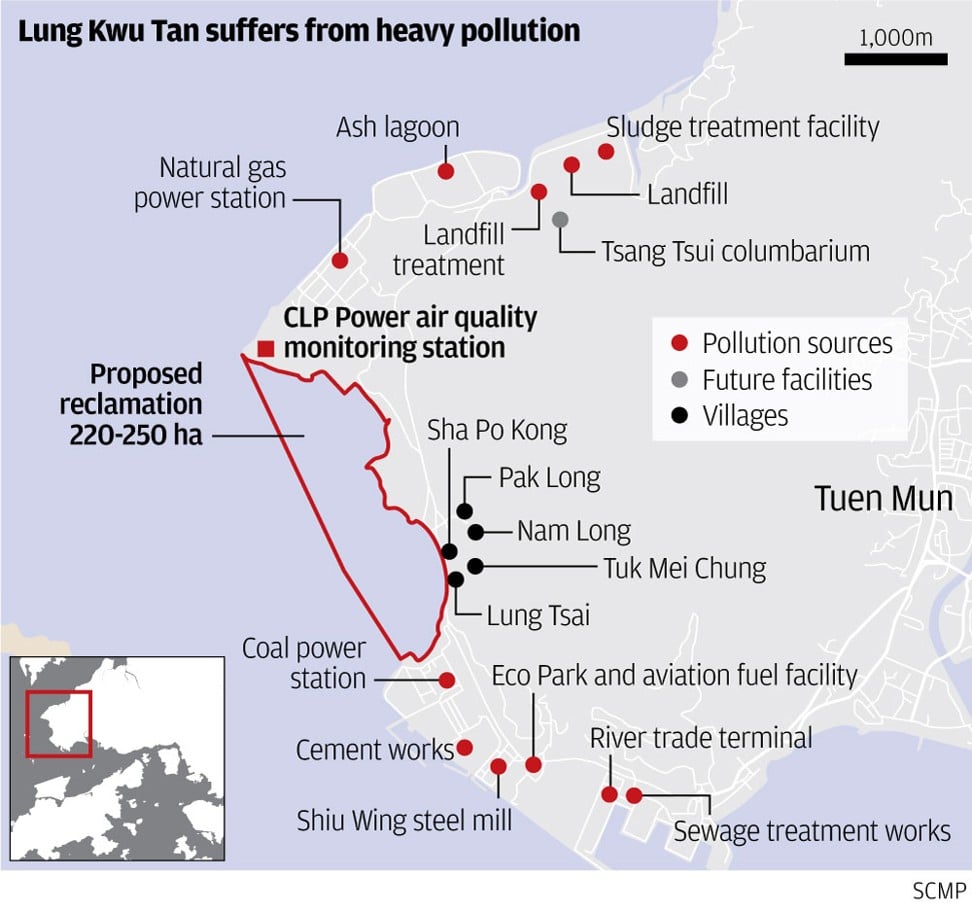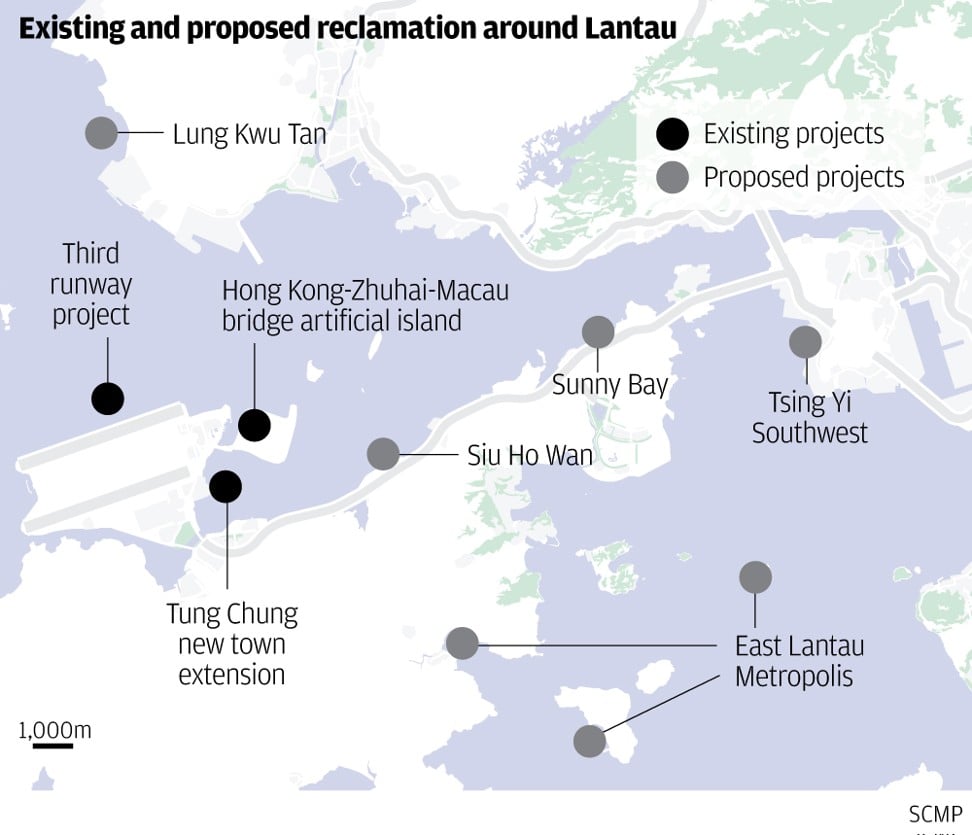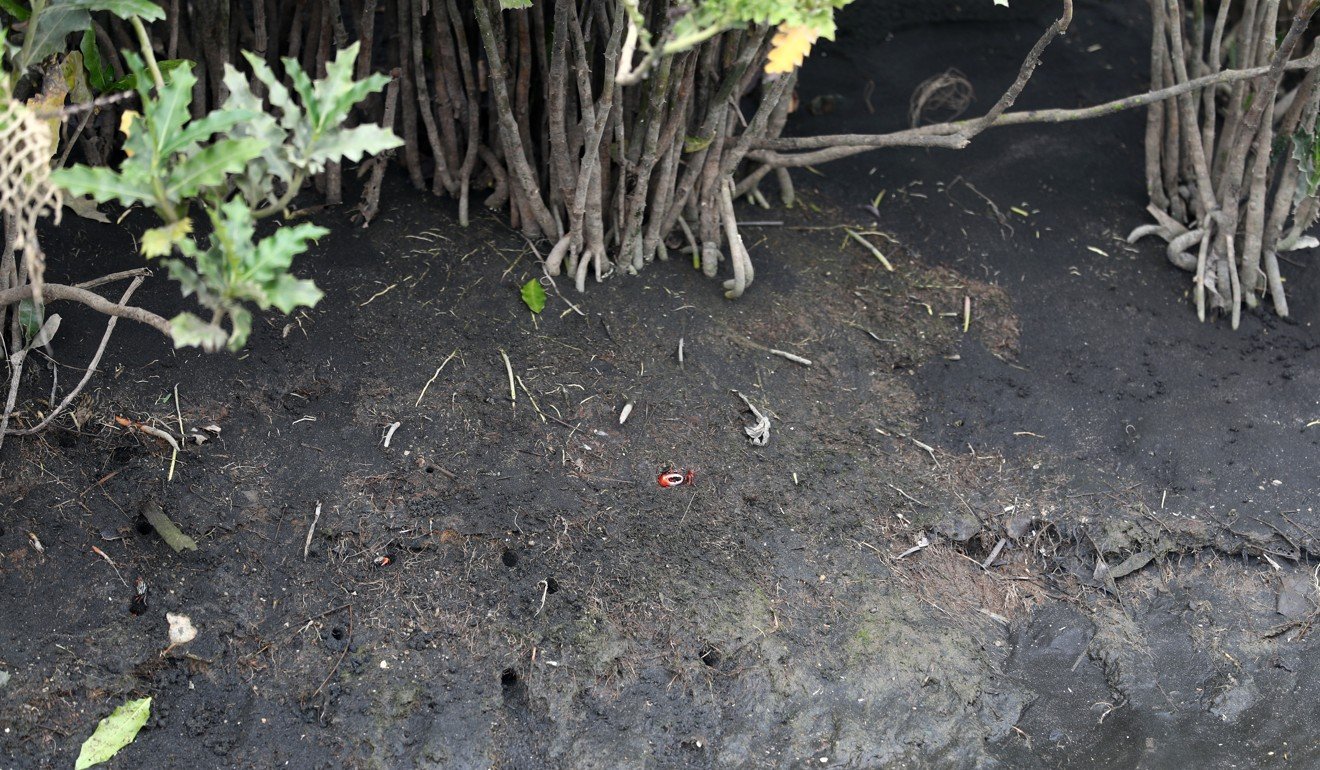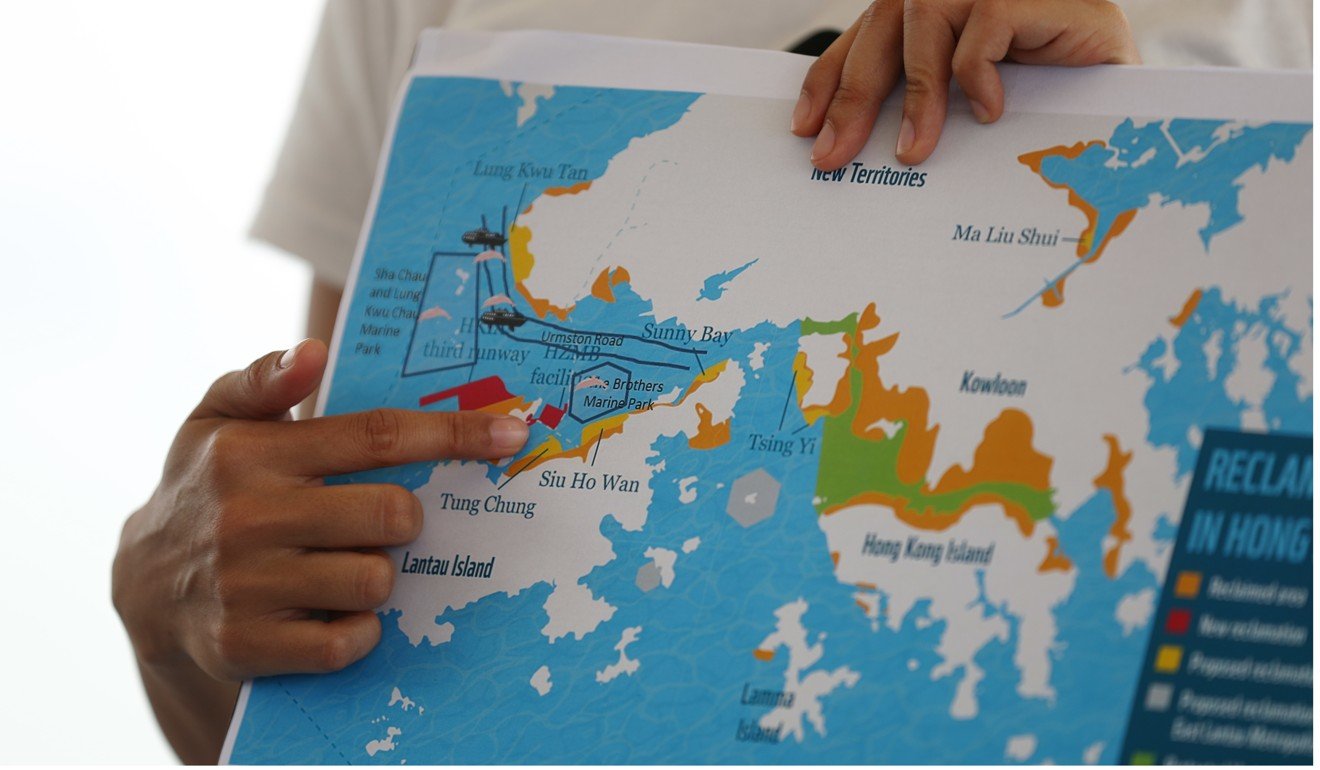
Villagers in Lung Kwu Tan, ‘Hong Kong’s dumping ground’, fear the environmental consequences of 250-hectare reclamation plan
For almost 40 years, the northwesternmost corner of the New Territories has hosted heavy industry, incinerators and landfills, making the local environment a shadow of its former self. Now a plan has been floated to reclaim 250 hectares of nearby sea, which villagers say would be the final nail in the coffin

Lau Wai-ping strolls along the beach in front of his village, occasionally kicking up sand, as he often did in his childhood.
The grains are as black, fine and pillowy as in the 66-year-old’s memories of his youth, but everything else is different. Where pink dolphins used to roam nearby, it is now a polluted, greyish-yellow swirl of murky sea. Where big turtles used to come ashore and nest, it is littered with garbage. And where the horizon used to stretch out as far as the eye could see, it is dense haze.
For almost 40 years, Lung Kwu Tan, at the northwesternmost corner of the New Territories, has been Hong Kong’s dumping ground. The area contains two power stations, a cement factory, a steel factory, a sludge incineration plant, an aviation fuel plant, a construction waste fill, a landfill, and a soon-to-open columbarium with 160,000 niches.

The bay is lined with high mountains, and the sea has become an important passageway to vent polluted air. So a government proposal to fill in 250 hectares of sea has locals worried. For Lau, it would be the final nail in the coffin for the environment of five villages next to the beach, which are home to more than 1,000 people.
“Without wind from the sea, the dirty air will have nowhere to go but sink down into our villages,” Lau said. “The pollution here is so bad that visitors think it’s the reason the beach sand is black. In fact, this is Hong Kong’s only natural black sand beach. It will be such a pity if it’s gone.”
Lung Kwu Tan is one of five nearshore reclamation locations put forward by officials. The aim is to create about 600 hectares of land for industry, education, recreation and housing. The other four sites are at Sunny Bay and Siu Ho Wan on Lantau Island, Ma Liu Shui in Sha Tin, and the southwest of Tsing Yi.

The sites, together with a proposed 1,000 hectare man-made island off the east coast of Lantau, are touted by officials as the solution to a predicted shortage of 1,200 hectares for housing and economic development.
The government is under sustained pressure to find land in a city with notoriously cramped living conditions and the world’s least affordable property market.
The public are still being consulted on 18 options put forward by an official task force to address the shortfall, but the government has already thrown its support behind reclamation at the five sites, despite objections.
The five-month consultation exercise will end late next month.

“Now the consultation is nearing its end, we really hope our voices are heard,” said Lau, who is the local chief of the five Lung Kwu Tan villages.
One road running through the heavily industrial area serves all vehicles deemed damaging to the environment, and the five villages all sit on one side, with the beach on the other.
Over the past decade, Lau said, a larger number of villagers had developed respiratory diseases, with some developing cancer. And the patients were getting younger.
If the open sea were built on, the situation would further deteriorate, Lau said.
“The government already owes us for putting all these unwanted facilities here, and now they want to make our lives even worse,” he said.

Greg Wong Chak-yan, vice-chairman of the Task Force on Land Supply, which is conducting and summarising the consultation, said the body had heard villagers’ concerns.
Wong, who has visited the villages, conceded that pollution was bad. But he said reclamation might provide an opportunity for a better living environment, as more land meant the government could move the industrial road away from the villages, leaving space for greening and recreation.
“We will reflect the villagers’ opinions in our report to the government,” Wong said. “But personally, I hope the villagers can also think about whether reclamation could be a chance for them to negotiate with the government for a better environment.”

Lung Kwu Tan residents are not the only ones protesting. Last week, 14 concern groups and seven leading ecologists issued a joint letter stating their opposition to reclamation due to the “irreversible damage” it would have on marine ecology. The signatories included WWF-Hong Kong, Greenpeace and the Hong Kong Fishery Alliance, as well as marine mammal researcher Lindsay Porter of the University of St Andrews in Scotland, and shark and ray conservationist Andy Cornish.
Official figures showed only 47 Chinese white dolphins were spotted in Hong Kong waters between April 2017 and March this year, the letter pointed out. Back in 2003 there were 188 of the iconic pink animals.
Their favourite Hong Kong habitat is the sea around Lantau, which since 2011 has seen several large reclamation projects, including a third runway at the airport, work for the Hong Kong-Zhuhai-Macau bridge, and the north Lantau extension of Tung Chung.
Four of the five proposed nearshore reclamation sites, including Lung Kwu Tan, are located in the same stretch of water.
The pink dolphins are an animal Lau holds dear to his heart. Once upon a time, he would see the much loved creatures chasing fish down to the shore near his home.
“Now they are all gone,” he said. “This beach is the last reminder of what this place used to be.”